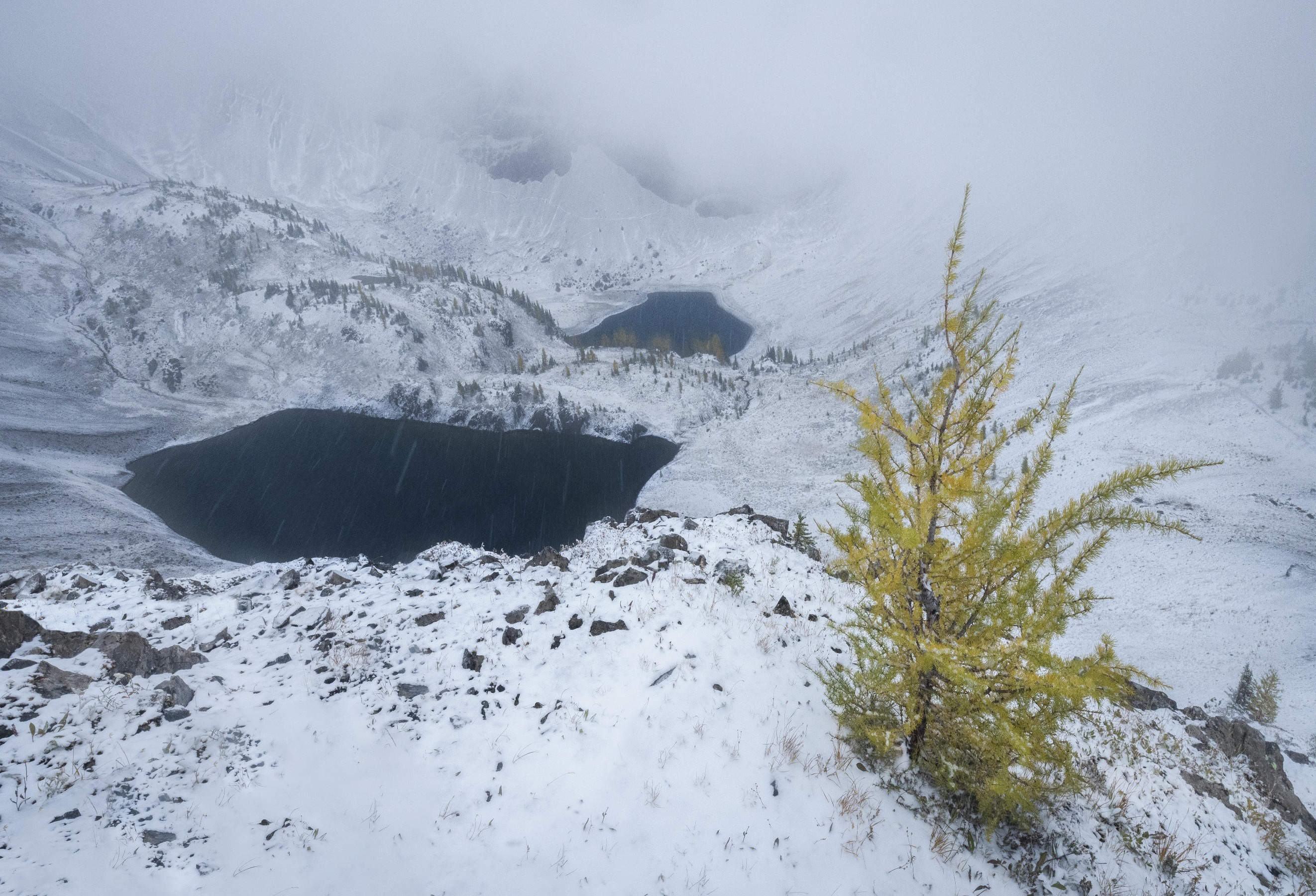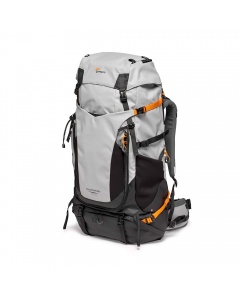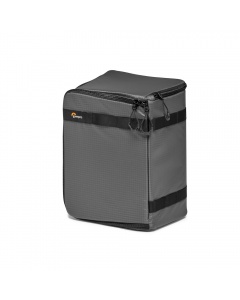Striking Gold: A Larch Season Photo Mission with the LowePro PhotoSport PRO
08.11.2021 | Reading time: 10 minutes
Author: Trixie Pacis
Magic unfolds in the Canadian Rockies during the transition to fall. It’s larch season, a glorious but short-lived window where the needles of this “deciduous conifer” transform from green to gold. If you conjure an image of the iconic peaks and turquoise lakes of the Rocky Mountain landscape beneath a blanket of fall hues, you’ll understand why droves of photographers and adventurers converge on this colourful display. I set off on an overnight backcountry adventure with award-winning adventure photographer Paul Zizka to see what all the fuss was about.
Planning a Larch Season Photo Mission
When it comes to capturing golden larches, timing is everything. Larch season lasts just a few weeks, typically from late September to early October, until the trees shed their needles for the winter. Arrive too early, and the larches will blend in with neighbouring evergreens. Wait too long and the needles will have faded or been blown off the branches by a storm.
Paul and I plotted an overnight backcountry trip to capture this phenomenon. Paul was adamant about an overnighter because it would allow him to shoot the golden larch trees and turquoise lakes of the high in the alpine in early morning and evening light. Paul chose a destination on the border of Banff National Park and Kananaskis Country in the Canadian province of Alberta with two objectives in mind: the northwest ridge of Mount Birdwood as well as a stroll through the larch forest around Mount Smutwood. He arranged for a Banff National Park bivouac permit to camp overnight as well as a permit to recreate in Kananaskis Country, through which we would be passing. With a departure date and destination set, it was time to pack our bags.
Packing for an Overnight Photography Adventure
Autumn is a beautiful season to explore at high elevations, but camping in cold weather requires additional gear. I’ve embarked on multi-day treks from Alaska to the Himalayas with a camera in tow, but on this trip, I discovered that not all backpacks are made equal; watching Paul use a bag designed for photographers as much as backpackers was a revelation.
I met Paul at his place on the crisp September morning of our trip. Paul was in the process of packing and introduced me to the Lowepro PhotoSport PRO 70L backpack, the latest addition to Lowepro’s proven line of camera bags. In a nutshell, PhotoSport PRO is the ideal solution for backpacking photography. It integrates all the features required for an overnight trip, plus all the bells and whistles for secure and convenient camera access.
“They really thought of everything,” Paul said as he packed the PhotoSport PRO with all the gear he would need for our trip. Indeed, the bag was designed with every essential detail in mind.
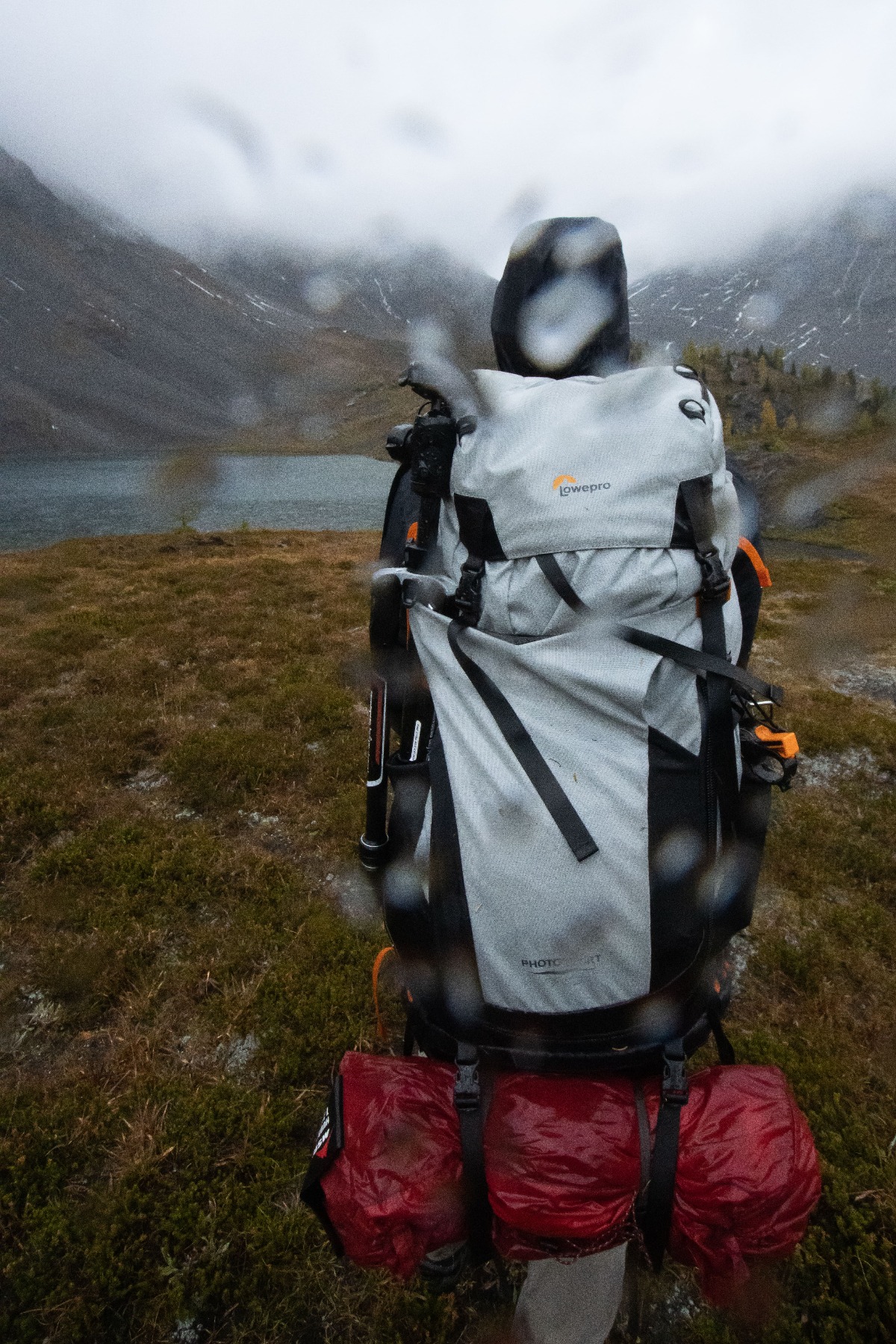

Accessories
Paul tucked his tripod and water bottle into the side pockets, pointing out that the bag has a side pocket for those who prefer hydration reservoirs with drinking tubes. Last but not least, Paul stashed the small accessories he wanted to keep accessible in the removable lid, including his phone, wallet, sunglasses, and satellite device.
Before setting off, Paul adjusted the torso length, load lifter straps, chest straps, and padded waist straps for maximum comfort. Paul also mentioned that the Activ Lift system and adjustable pivoting waist transferred weight to the hips and provided a wider range of motion.
I was intrigued by the bag’s thoughtful design and curious to see it in action.
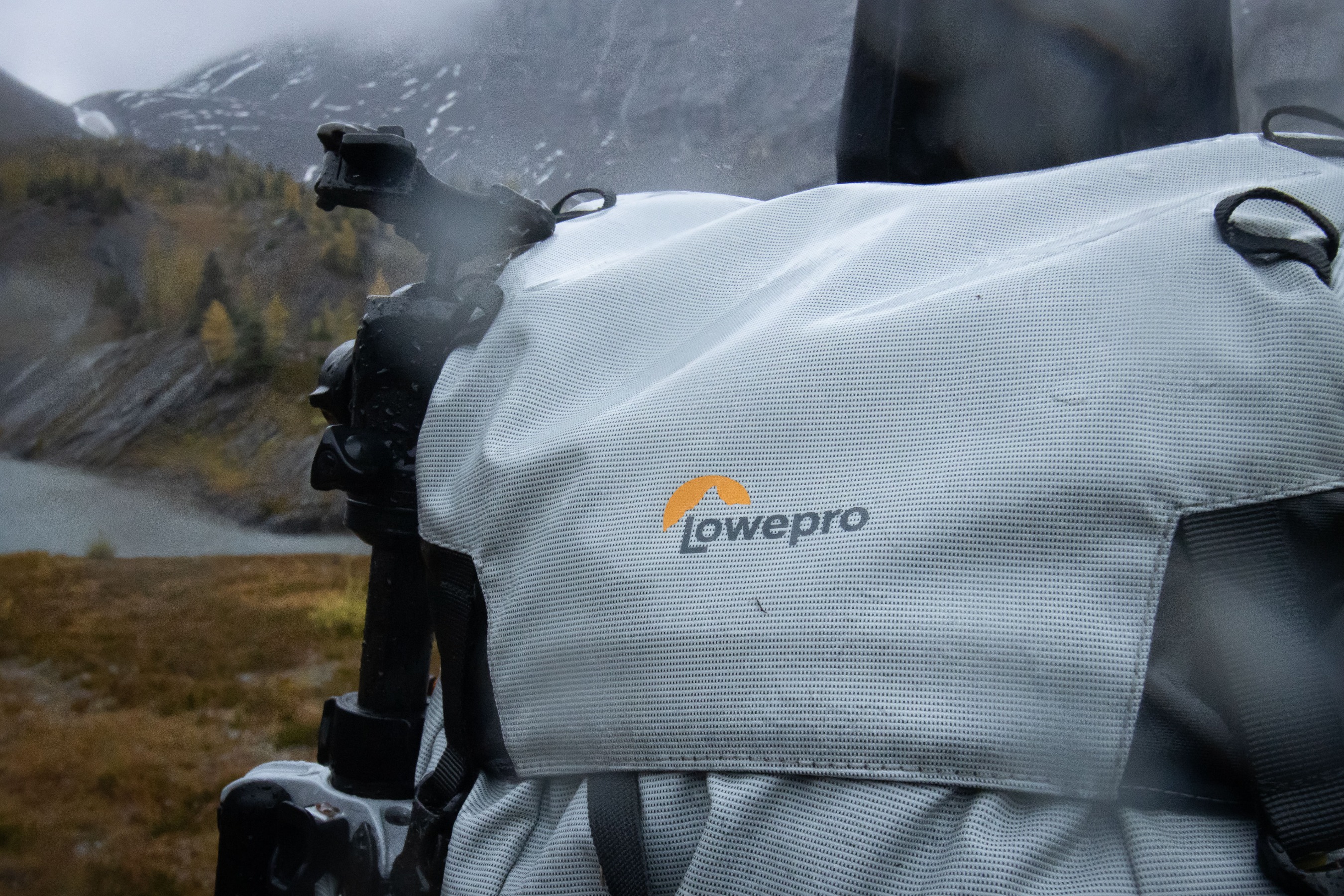

Camera Gear
The PhotoSport PRO features front and back panel access. Favouring the rear opening, Paul packed his Canon R5 mirrorless camera and three lenses using the GEARUP PRO XL camera box insert that comes with customizable velcro inserts to hold everything in place. There was even extra room for a few additional items, including his headlamp.
Striking Gold
Within a few hours, Paul and I were deep in moose country, with the trailhead far behind us. The start of our adventure traced a river through the forest and into an open valley. The sun was shining and a light dusting of snow accentuated each sedimentary layer of the surrounding peaks. We bid the valley floor farewell and began our ascent to the high alpine. We were soon surrounded by larch trees of every hue—from neon green with gold tips to buttercup yellow. I felt the euphoria of “striking gold”.
Suddenly, winter was upon us. Thick snowflakes fell, many carried sideways by fierce gusts of wind. By the time we reached our bivy spot, the ground was white. Paul and I pitched our tents amidst a stand of butterscotch-coloured larches, then glanced at the northeast ridge of Mount Birdwood through the fiery foliage. We quickly agreed to adapt our plans in light of the unexpected weather. The summit of Mount Birdwood was just around the corner and looked manageable despite the fresh layer of snow.
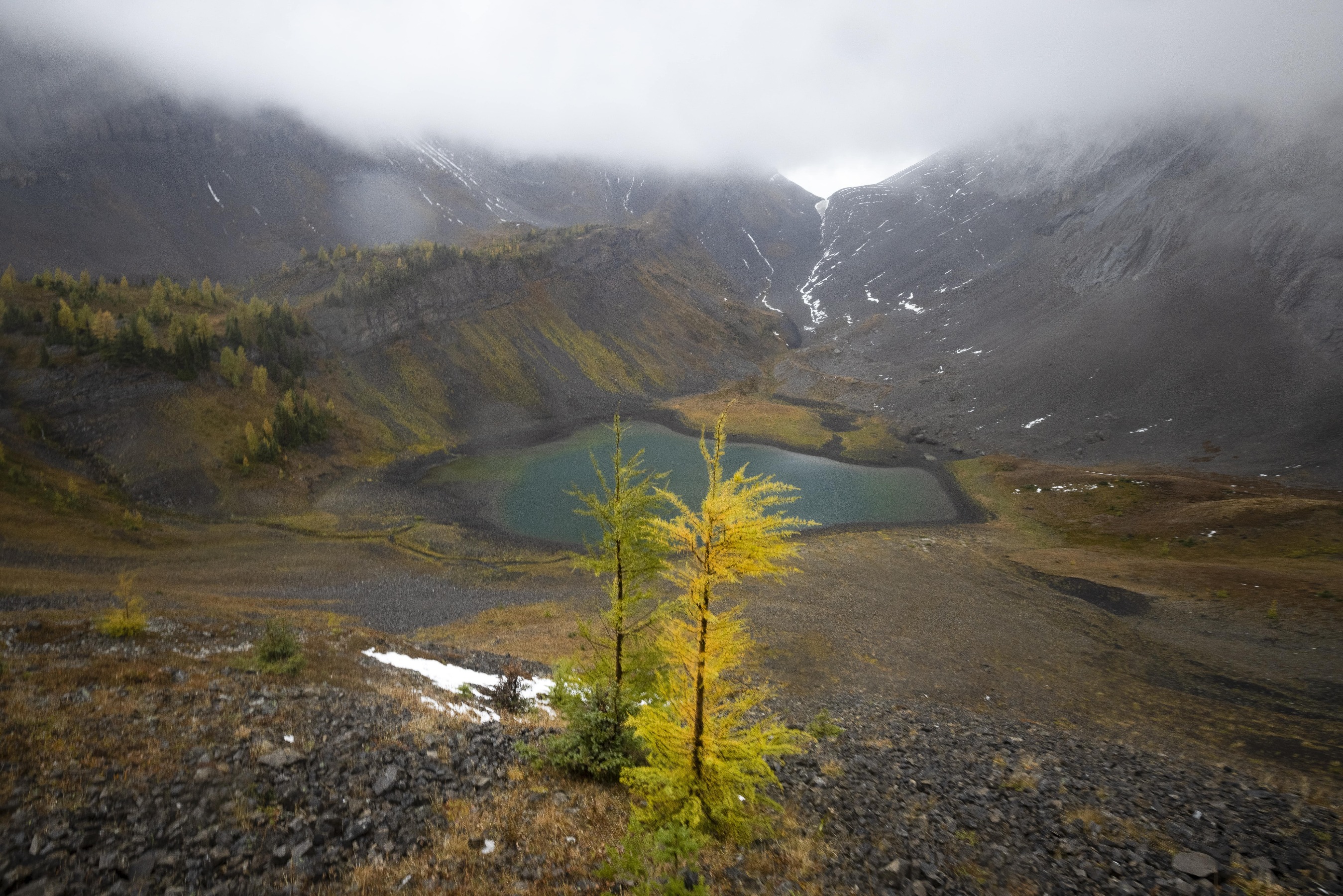

Camping Gear
With his camera secure, Paul loaded his sleeping bag and mat into the backpack’s bottom pocket. Storing these items here cleverly provides extra padding below the camera gear. He then strapped his one-person tent to the adjustable straps outside the bottom pocket.
Paul packed his camping stove, dehydrated meals, and spare layers in the PhotoSport PRO’s main compartment along with the RunAbout foldable day pack. Even after packing all the essentials for a one-night trip, there was plenty of room to spare.


The Runabout
It was time to explore with fast and light. It only took a minute for Paul to transfer the GEARUP PRO XL housing, all of his camera gear into the RunAbout daypack. It fit like a glove with just enough room for a spare layer, water, snacks and accessories. Without the same efficient system, my fingers froze before leaving camp.
We spent the evening on high ridges, photographing golden larches against turquoise lakes and white snow, and shouting in excitement over the wind. Working side-by-side, I couldn’t help but notice that Paul’s camera gear had been at his fingertips every step of the way. Whether carrying the PhotoSport PRO or the RunAbout, only two smooth zippers stood between him and his camera. Meanwhile, I was fumbling with multiple buckles, cinches, and zippers to wrestle mine free. The biting cold only accentuated the difference.


One Bag, Three Seasons
We crawled out of our tents at the crack of dawn to capture larches in the morning light, and discovered that the fallen snow had melted overnight. Rain pummelled down from the heavens as we explored the grove of larch trees around Birdwood Lakes. Even on that torrential day, nature’s brilliant display had us running around in search of new compositions with childlike fervour.
In just one trip, Paul put the PhotoSport PRO to the test in three seasons: summer, fall, and winter. When I finally asked him what he thought of the bag, he called it his “new go-to for future expeditions.”
That told me everything I needed to know about the Lowepro PhotoSport PRO collection.
